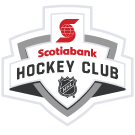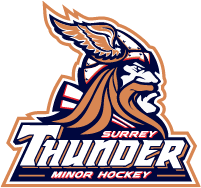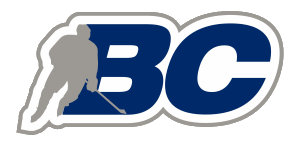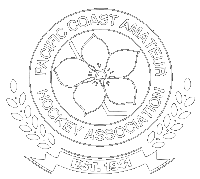U11
U11 Pathway
U11 Rep Evaluations 2025
U11 A Pool Selections
The next ice time for the A Pool is Saturday, Sept 13th, 5:00pm at NSSIC #3
U11 B Pool Selections
The next ice time for the B Pool is Saturday, Sept 13th, 8:00am at NSSIC #1
U11 C Evaluations
Player Pathways
U11 (ATOM)
Effective for the 2020-2021 season, minor hockey associations across Canada will be following the U7 (formerly Initiation), U9 (formerly Novice) and U11 (formerly Atom) Player Pathways.
- Player Pathways, as we have seen with U7 (Initiation) and U9 (Novice) Programming are progressive, learn-to-play development guides that support the player development continuum from U7 (Initiation) through to U11 (Atom).
- The Pathways outline optimal seasonal structures and age appropriate development guidelines.
U11 (ATOM)
- The U11 (Atom) Player Pathway consists of a policy and recommendations focused on the appropriate development for 9 and 10-year-old players.
- The U11 (Atom) Pathway delivers a number of benefits to participants and their families including:
- creating a positive experience during evaluations by providing planned pre-evaluation ice sessions
- avoiding evaluations the first week of school
- allowing all U11 (Atom) players to be actively playing for 100% of the season
U11 (Atom) Player Pathway Policy:
- No evaluations from March through August
-
- Preparation phase can begin the Tuesday following Labour Day.Benefits: This process gives minor hockey associations and parents back their summer. The season doesn’t need to start this early only to be finished at the end of January or February; instead, it should start later and also end later. This also allows minor hockey associations a chance to get organized and begin planning.
- Preparation phase can begin the Tuesday following Labour Day.Benefits: This process gives minor hockey associations and parents back their summer. The season doesn’t need to start this early only to be finished at the end of January or February; instead, it should start later and also end later. This also allows minor hockey associations a chance to get organized and begin planning.
- No evaluations the first week of school where school starts the week after Labour Day
- Must offer a minimum of 4 practices / skill sessions prior to formal evaluations beginning.Benefits: A player’s first experience in the new hockey season should not be a formal tryout – this gives all players the opportunity to get back on the ice in a more ‘player-friendly’ scenario before being evaluated. Minor hockey associations will have the opportunity to run their own prep camps instead of members spending money outside the association.
- Must have a minimum of 3 formal evaluation sessions – Recommended – 1 skills session, 1 small area games session, 1 game.Benefit: Players need a fair chance to be evaluated – a standardized process will show transparency, fairness, and consistency. This also provides coaches with the foundation for a development plan based on a solid and quantifiable evaluation.
- Teams must have a period of development time following team selection and prior to the start of the regular season.Benefits: It is very important to provide coaches with the opportunity to develop and improve their players skills prior to getting into organized games. The progression should be skills before tactics and tactics before systems.
- Playoffs must be tournament style playoffs versus elimination rounds.Benefits: This gives all teams the chance to play to the same end point in the season. All players deserve the same chance to play to the end of the year, with more teams and more players playing longer into the season. This also allows more rest and recovery within the season and the regular season schedule can be spread out. In addition to providing a greater opportunity for players to participate in different activities.
- Fair/equal ice time (goalies rotate for equal games/playing time through season and playoffs)Benefits: Fair and equal ice time is designed to ensure that all players get the same opportunity to contribute to the outcome of games, regardless of skill or ability. A coach’s responsibility is to develop all players to contribute. Shortening of the bench is not permitted. All players should receive fair and as close to equal as possible ice time, including equal opportunities on special teams.
- Limit position specific specialization (except goalies), All skaters are to rotate through all positions to ensure each player has the opportunity to try out each position (forward – LW/C/RW and defence ‐LD/RD) at least once.Benefits: Players may determine that they wish to be a full-time goaltender, but it is important for all players to learn the fundamentals of every position for the overall development of the player.
U11 (Atom) Pathway Recommendations (Minor Hockey Associations should encourage and support):
- Season should allow for two (2) seasonal breaks (not including Christmas / long weekends) comprised of 5 days where no scheduled games or mandatory practices take place.
- Recommended maximum of 45 games per year (including tournaments and playoffs).
- Small Area Games in practice / Station based practices
- Ideal Seasonal Structure:
-
- Preparation/Evaluation Phase:
- The period of time prior to the season starting. (Up to 4 weeks)
- Development Phase:
- The period of time following tryouts prior to the regular season starting. (Up to 4 weeks, 8-12 practices, 2 exhibitions games)
- Regular season:
- The period of time from the first regular-season game to the start of playoffs (Up to 24 weeks, 22-44 practices, 16 to 20 games)
- Playoffs:
- The period of time from the end of the playoffs to the start of the next Preparation/Tryout Phase.
- Commencing after March 15. Up to 4 weeks.
- Must have tournament-style playoffs.
- The period of time from the end of the playoffs to the start of the next Preparation/Tryout Phase.
- Offseason Phase:
- This refers to the period of time from the end of the playoffs to the start of the next Preparation/Tryout Phase.
NOTE: With the implementation of the U11 (Atom) Player Pathway, Hockey Canada has made key changes to the Player Pathways at U9 (Novice) and U7 (Initiation) that will create consistency in all programming across the country and a seamless transition for players from U7 (Initiation) through to U11 (Atom) based on Long Term Player Development.
The Policy and Recommendations for the U7 (Initiation), U9 (Novice) and U11 (Atom) Pathways have been identified with the parent and player in mind:
- This refers to the period of time from the end of the playoffs to the start of the next Preparation/Tryout Phase.
- Preparation/Evaluation Phase:
- Allowing families to have their summer break back while still providing on ice opportunities ahead of evaluations
- Giving players key seasonal breaks to allow for holidays and the chance to play other sports throughout the year
- Establishing consistent age appropriate programming that is inline with the Long-Term Player Development.
Surrey Minor Hockey Association will continue their support of Hockey Canada to ensure that the policies outlined throughout this new programming are administered to provide players with the best possible hockey experience. The implementation of the U11 (Atom) Player Pathway are a step towards creating a long-lasting love for the game for all players within Hockey Canada Programming.
Key Links:
- Atom Pathway Presentation Guide … Hockey Canadahttps://cdn.hockeycanada.ca/
hockey-canada/Hockey-Programs/ Coaching/atom-program/ downloads/hc-atom-pathway- resource-guide-e.pdf - Canadian Player Pathway (ATOM) … Hockey Canadahttps://www.bchockey.net/
Files/190117%20-%20Atom% 20Pathway.Presentation% 20Light.v11.pdf
Division Executive Contacts
Position:
Name:
Phone:
Email:
U11 Rep Division Manager
Ryan Poirier
n/a
U11divmgr@surreyminorhockey.com
Position:
Name:
Phone:
Email:






